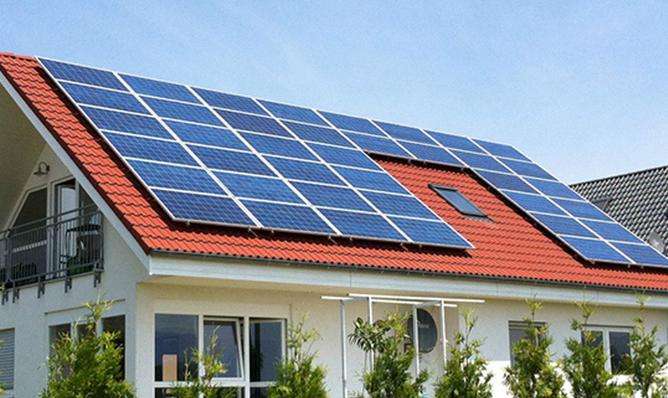Yes.
1. Cement weight method. Pouring cement pillars on the cement roof is a common installation method, which is very stable and does not damage the waterproofing of the roof. Prefabricated cement counterweights save time compared to manufacturing cement pillars, and the counterweight cement bricks can be customized in advance.
2. Steel structural links. Make an orchid plate at the bottom of the support column and use galvanized steel to connect multiple support networks together. 500 kW or even more than a megawatt is one unit. The self-weight of the photovoltaic support array on the roof is used to increase. wind resistance. It should only be carried out at the roof support point. A few cement pillars support a wide range of supports.
3. Chemical anchor bolts. For prefabricated floor factory buildings, weight per unit area is importantt. A 5 cm thick layer of cement can be made on the roof, then chemical anchor bolts are used to secure the supports. The waterproof layer of the roof will not be damaged. Currently, only a few projects in China use it. This method has no expansion force for anchoring, is easy to construct and saves costs. However, it has poor heat resistance, breaks at high temperatures, and cannot be welded.
Should the design and installation of photovoltaic panels take into account the influence of wind speed? How should building loads and wind resistance requirements be considered when installing distributed photovoltaic systems?
First, the roof must meet the bearing capacity;
The designed mounting bracket should use a lightweight structure, such as aluminum material, which also makesent the structure more solid and the installation angle is generally not too easy to avoid the risk of wind pressure.
In order to improve efficiency and prevent differences in solar irradiation from affecting the overall power generation efficiency of the system, try using a micro- inversion.
The surface of the photovoltaic modules of the veranda represents approximately 80 to 90% of the total installable surface, which must be reserved for lighting.
Lightning protection and grounding protection of the entire system must be effective and reliable.
The specific quote depends on the usage and design plan as well as the materials used
In addition to the wind speed, the design of the photovoltaic panels must also take into account seismic loading, installation convenience, thermal expansion and cooling shrinkage, etc.
It is common fordistributed photovoltaic panels are installed on roofs (there are also ground installations). Depending on the building load specifications, the main considerations are wind load and seismic load. be carried out in accordance with the requirements of the specifications. The calculation is carried out and the bearing capacity of the building is combined to determine whether it can be installed and how to install it effectively.














